► Cupra Tavascan review by CAR magazine
► We drive the new, all-electric family SUV
► Fizzier style, EV innards from the VW Group
It’s been a long time coming. It’s been five years since Cupra bosses first show the electric Cupra Tavascan SUV in concept guise, but we’ve finally driven the final production iteration on the road. The suits from Barcelona HQ call it the first hero of a new era for the brand, but the recipe is essentially the same as everything else with the young brand’s pointy logo: snaffle a platform from the Volkswagen Group mothership, add some drama to the interior and exterior styling – and make everything underneath more engaging to drive than its platform peers.
In CupraSpeak™, that’s ‘electrifying performance, unconventional challenger status and stimulating style.’ You get the drift.
Underneath all the branding and Cupra swagger, it’s a simple strategy that’s proving effective: the rear-wheel drive Cupra Born is one of the more interesting electric hatches to drive – and that’s before we even move to the hotter VZ. It’s the same formula for the upcoming Cupra Raval supermini too.
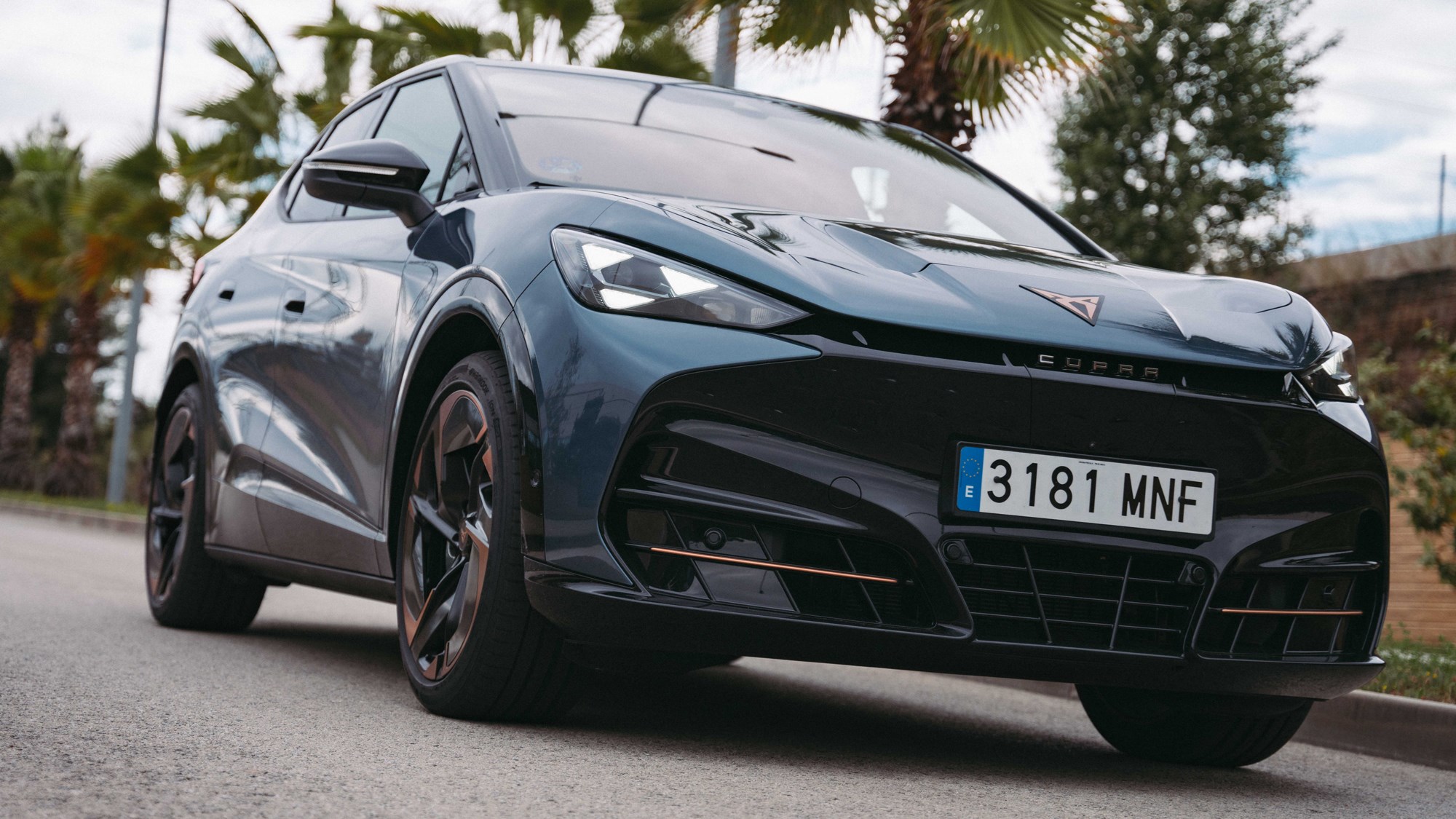
Take one look at the Cupra Tavascan then, and you can pretty much guess what it’s going to be like. But is it actually any good, and does it do enough to separate itself from its more sensible VW/Skoda/Seat relatives? We took Cupra’s latest electric SUV out on the roads near its Spanish HQ to find out.
At a glance
Pros: Sharpened handling, bold interior and exterior with huge infotainment screen
Cons: Interior can feel cheap in places
What’s new?
The Tavascan is an all-new car, but it builds on the same MEB platform as the cars such as the Skoda Enyaq and Volkswagen ID.4. Aside from the similar-sized dimensions, you’d hardly know at first glance: the Tavascan builds on the brand’s distinctive design language pioneered by the Born and Formentor.
At the front you’ll find the same triple-triangle lights as Born and a similar, full-width light bar at the rear. Every millimetre of its 4640mm length is filled with creases or folds of some sort – if the Born is the ID3 in a bodykit, then this is the ID.4 in its more athletic, dressdown weekend gear.
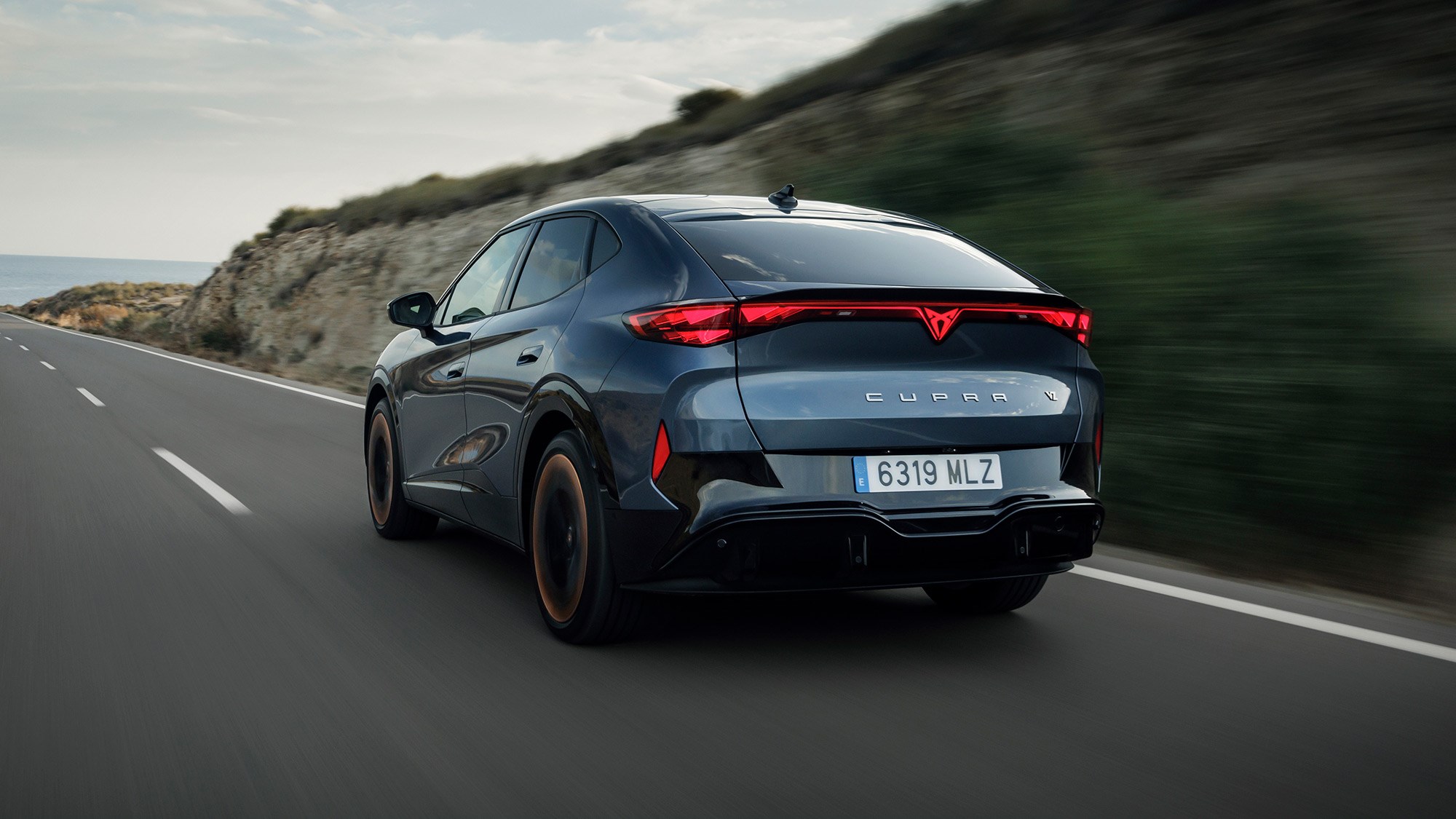
As you’d expect, Cupra’s engineers in Martorell have also fine-tuned the suspension for sharper dynamics: the MacPherson struts at the front and multi-link rear set-up have both been finessed with recalibrated spring and damper rates. Elsewhere, the steering has been engineered to offer more feedback than before, with the overall package being designed to be more dynamic to drive than its counterparts.
What are the specs?
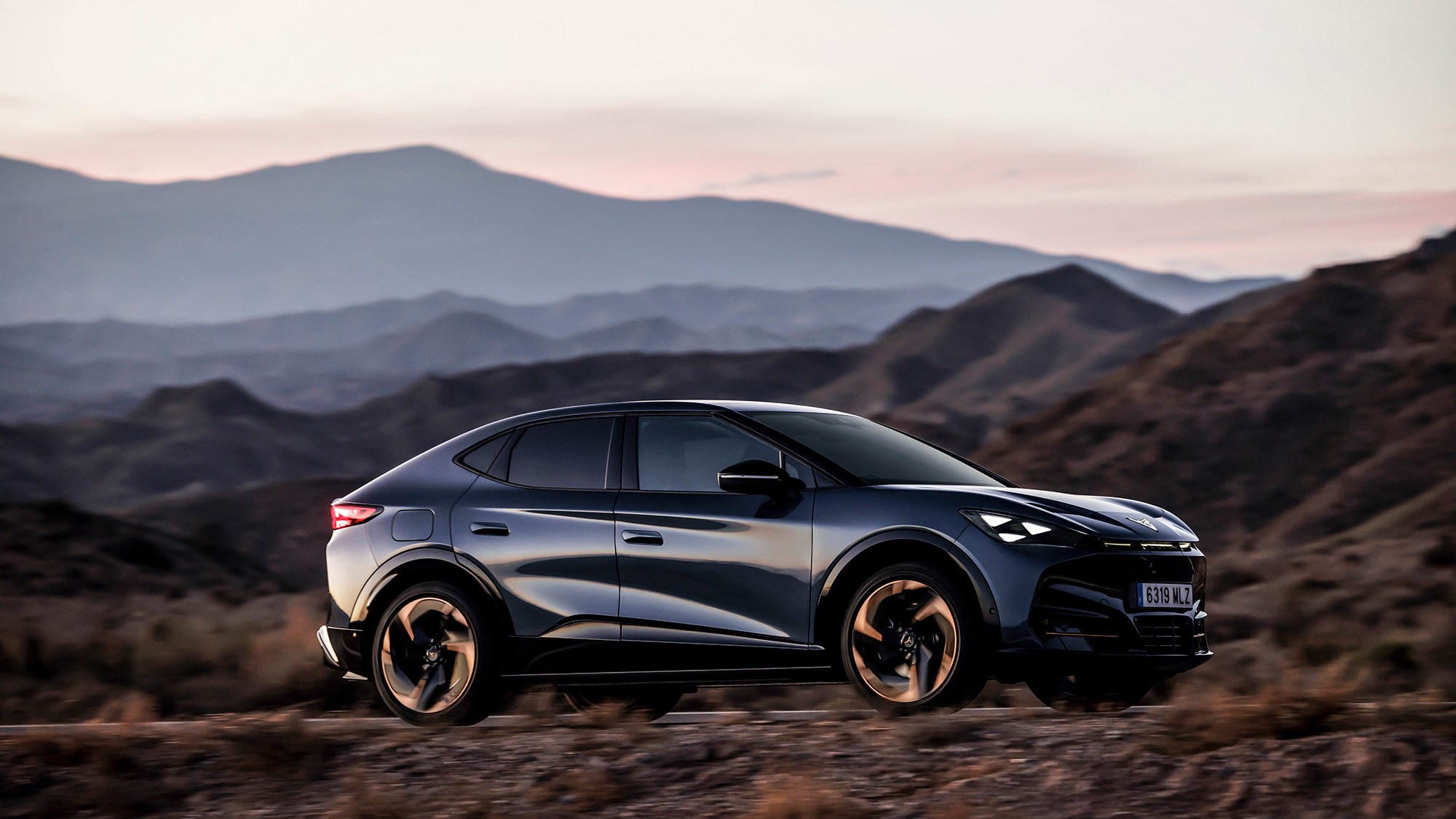
To that end, the Tavascan has a pretty punchy spec sheet. The top-of-the-range VZ packs in a combined 250kW (335bhp) and 402lb ft of torque thanks to dual electric motors. That makes for a 0-62mph dash of 5.5 seconds with a limited top speed of 112mph, though 0-30mph will feel even more rapid. Depending on the options you go for, there’s some magic at work: up to 30% of the power can be diverted to the front wheels for improved traction.
A rear-wheel-drive-only model with 210kW is also available and has a range of 353 miles, while the more powerful dual-motor model can do just 324 miles. A heat pump is available, though not standard, on either model (though the UK spec is still TBC) and both use the same 77kWh battery.
When you need to do it all again, the Tavascan can charge from 10 to 80% in just half an hour, when using a suitably potent 135kW charging point.
What’s it like to drive?
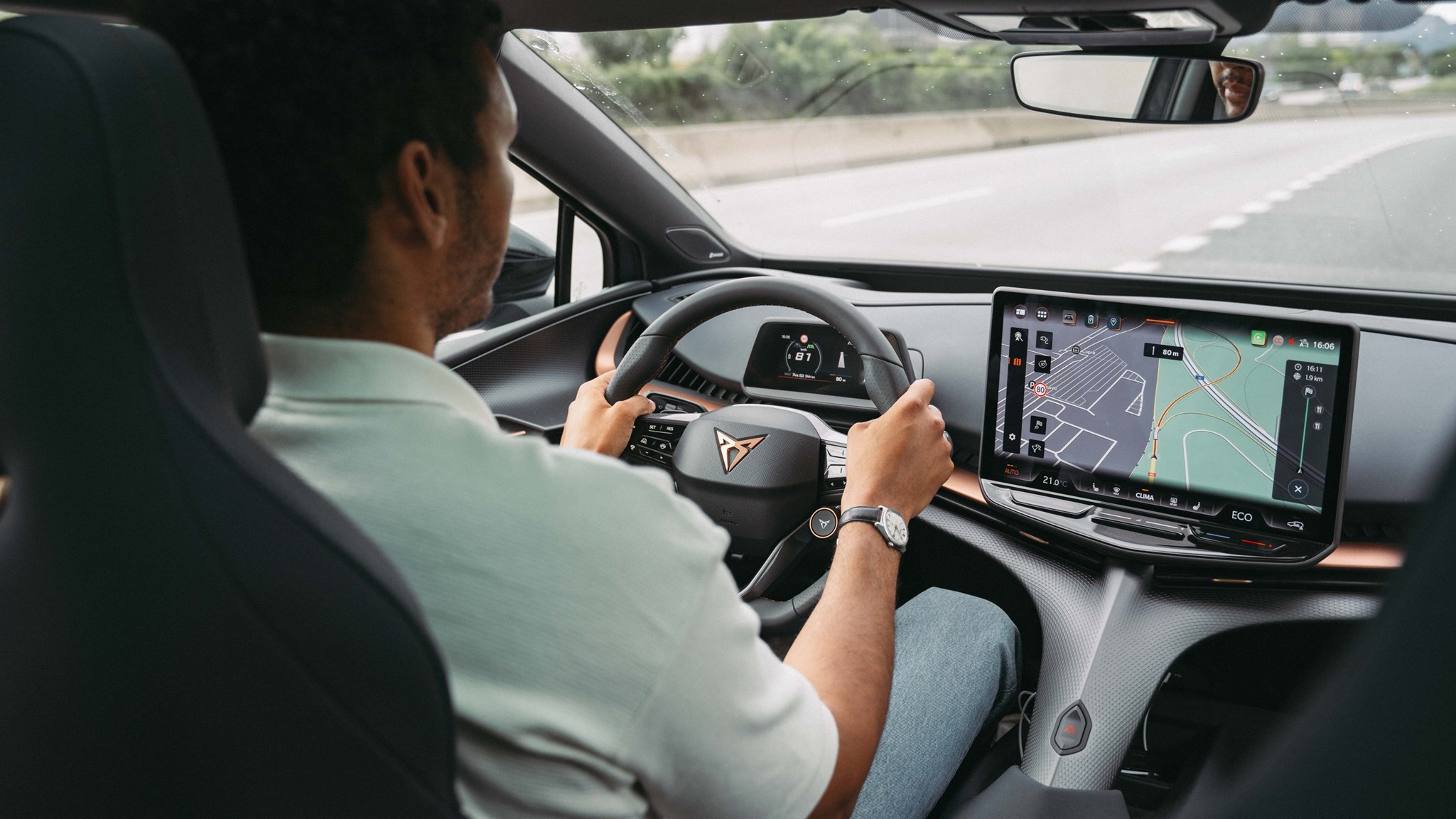
It’s sharper, grippier and overall more interesting to drive than its Wolfsburg counterparts, only scaled up here and with more practicality built in.
First the good bits: in VZ trim (the only type we’ve driven so far) the Tavascan makes its electric horses known and develops near-to-neck-snapping acceleration to 30mph. It’s enough to excite when exiting corners, and terrify passengers at the rear.
Steering is similar to the standard Born’s, with each mode (ranging from Comfort, Range and Performance to all-out Cupra mode) weighting up the wheel and proving incremental levels of feedback.
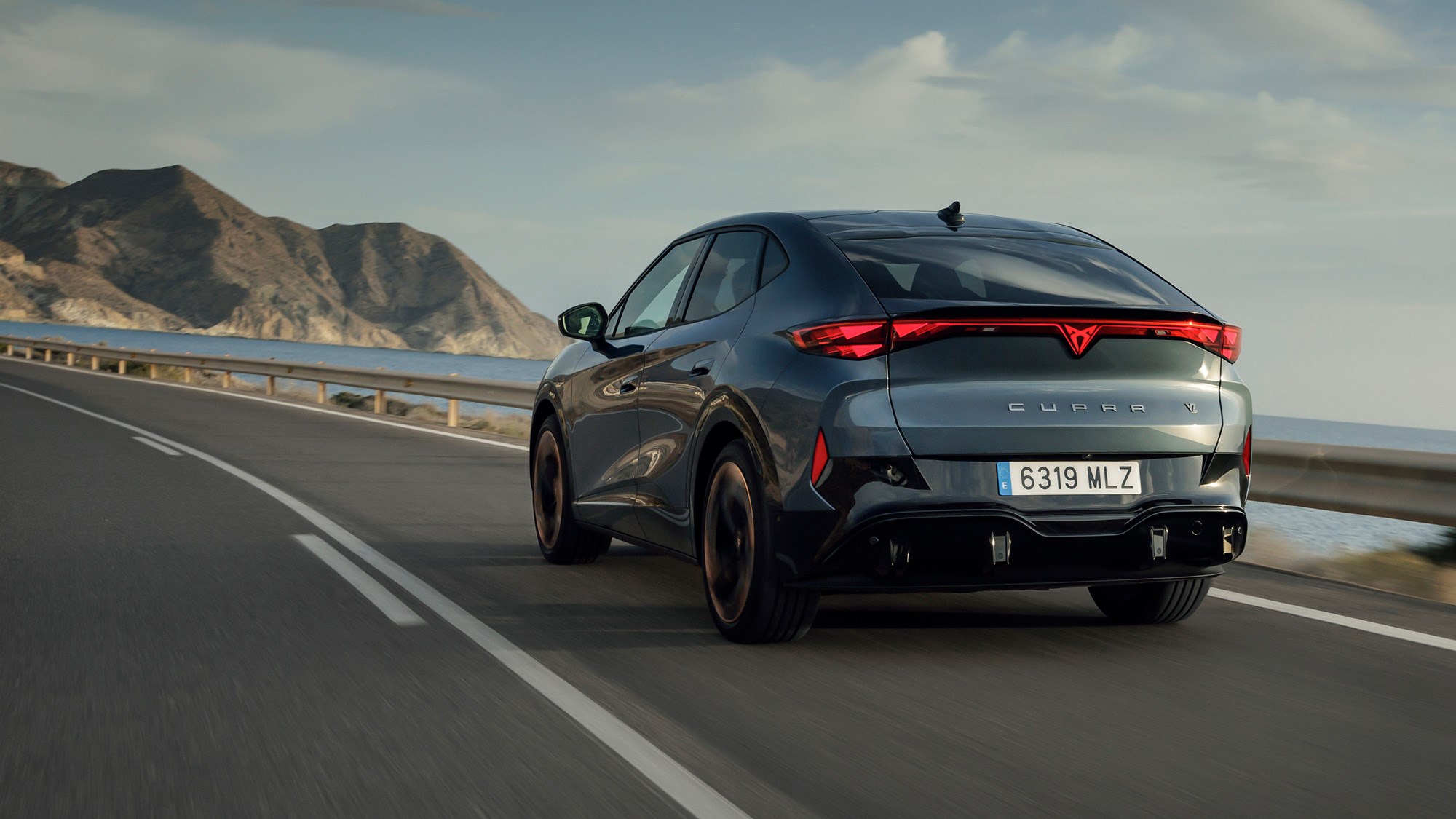
The ride is fine too, with very little body roll in corners and few distracting jolts, vibrations or harshness though the wheel or seat. We will reserve full judgment until we’ve driven it on more pockmarked UK roads.
The less good bits: that’ll have to be the brakes. Like in the Born, they feel powerful, but they’re a little uncertain and wooden in feel. Simply put, something is happening when you use them, though it doesn’t exactly track with the amount of pressure you’re using. They can feel a little woolley or disconnected. It’s the same in the Born, but not the Born VZ performance version.
What’s the interior like?
A game of two halves, if we’re honest. We were wowed by the bio-mechanical looks of the concept car’s interior, and even more so when they made it to the production model. However, in practice they’re a great idea marred by poor execution. Although a feast for the eyes, the Cupra Tavascan interior doesn’t have the plastics to do the design justice: they feel a little too plasticky and hard for a car with these premium aspirations. Even the lashings of copper – now a signature design of Cupra – don’t really help.
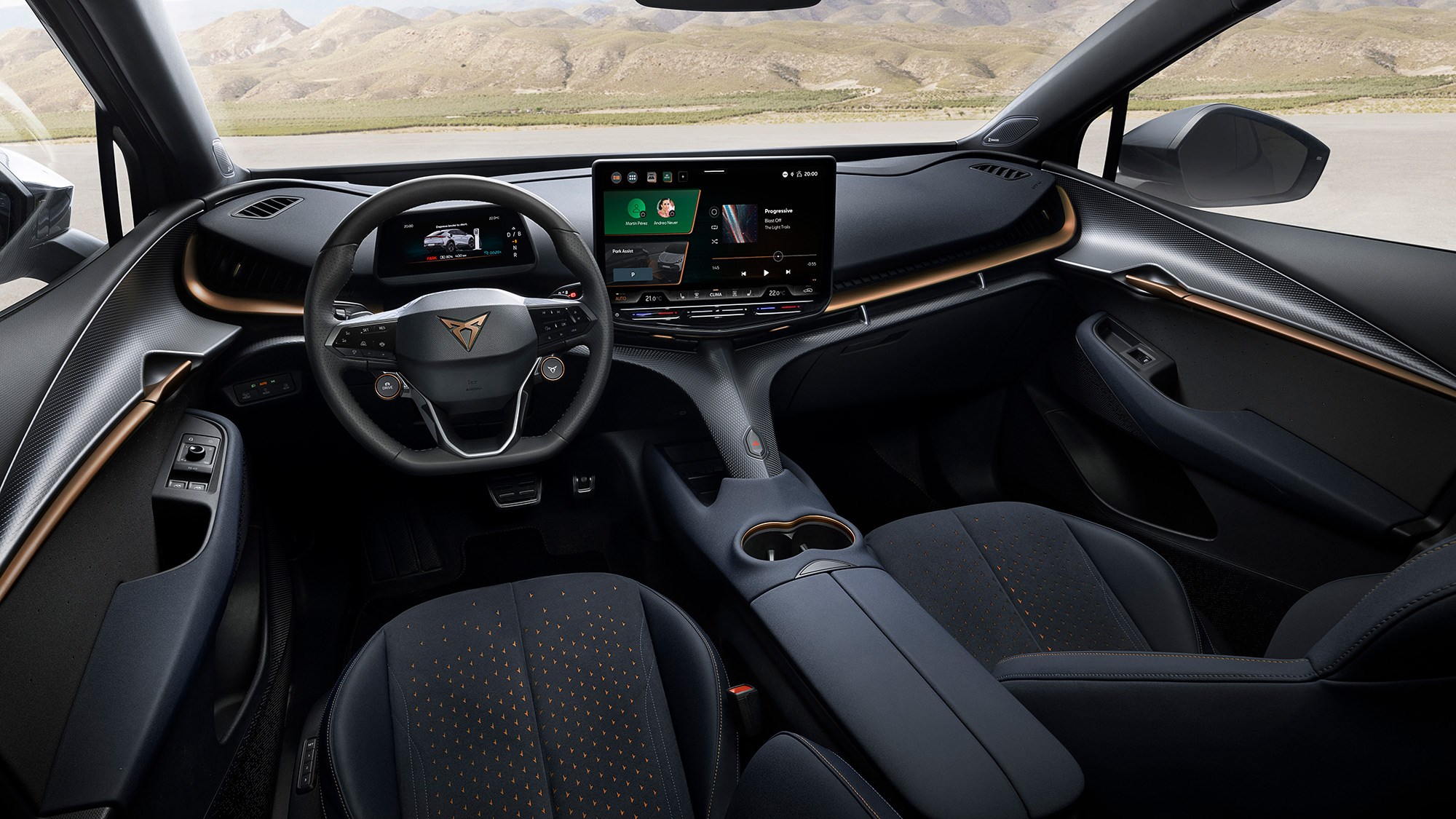
It’s a shame because everything else plays its part well. A huge 15-inch touchscreen tilted toward the driver is the biggest ever fitted in a Cupra, and its high resolution and quick response makes it relatively easy to use. We’d prefer more shortcuts and a few physical switches, but it wasn’t too hard to get to trying out the Sennheiser sound system – which delivers a hefty aural punch when needed.
The baked-in navigation is good, too, especially when specced with the Tavascan’s expansive head-up display (HUD), and interior lights. Both proved incredibly intuitive when traversing the dense roads of central Barcelona.
Rear-seat passengers will be pleasantly surprised by a good amount of legroom (at least for my 6ft 3in frame) and there’s adequate headroom in the back, too. That airy feeling is helped by the Tavascan’s panoramic sunroof.
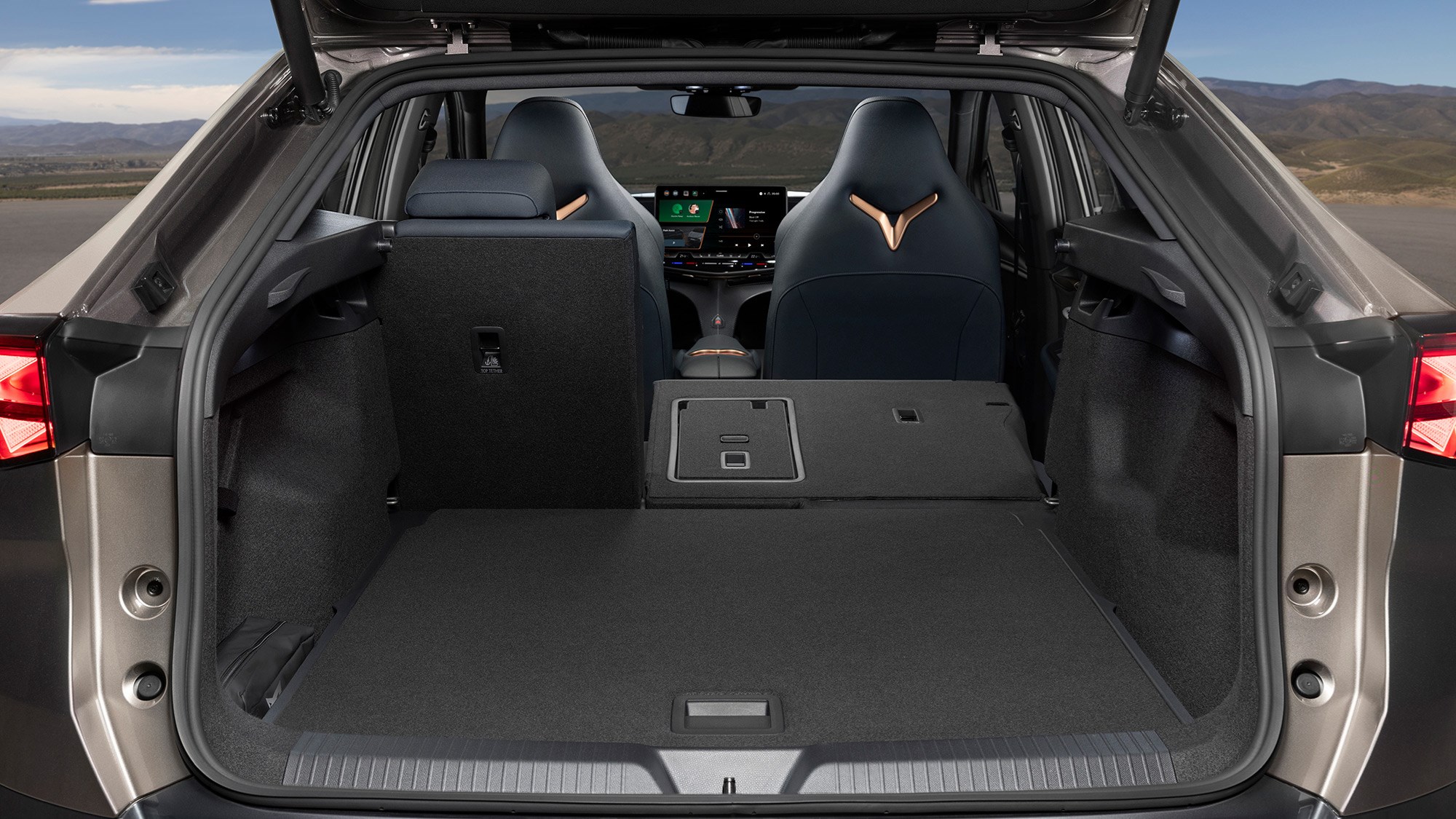
Boot space is fine at 540 litres, though probably a little smaller than you’d expect given the size of the car. Another casualty of dynamic styling perhaps.
Before you buy
The Cupra Tavascan will naturally be compared to its MEB siblings, and the outcome of those comparisons will vary depending on what you’re looking for. Sure, it handles better than the majority and looks better too – though inside it falls short on outright quality. Compare its interior to the Skoda Enyaq vRS’s for example and you may be disappointed. Still, it’s overall more interesting than the Audi Q4 e-Tron.
Away from the Wolfsburg mothership, the Tesla Model Y is a natural competitor. Musk’s SUV has a sparse but more premium interior, although space at the rear is worse. The Cupra is far better on the road though, especially when driving at pace.
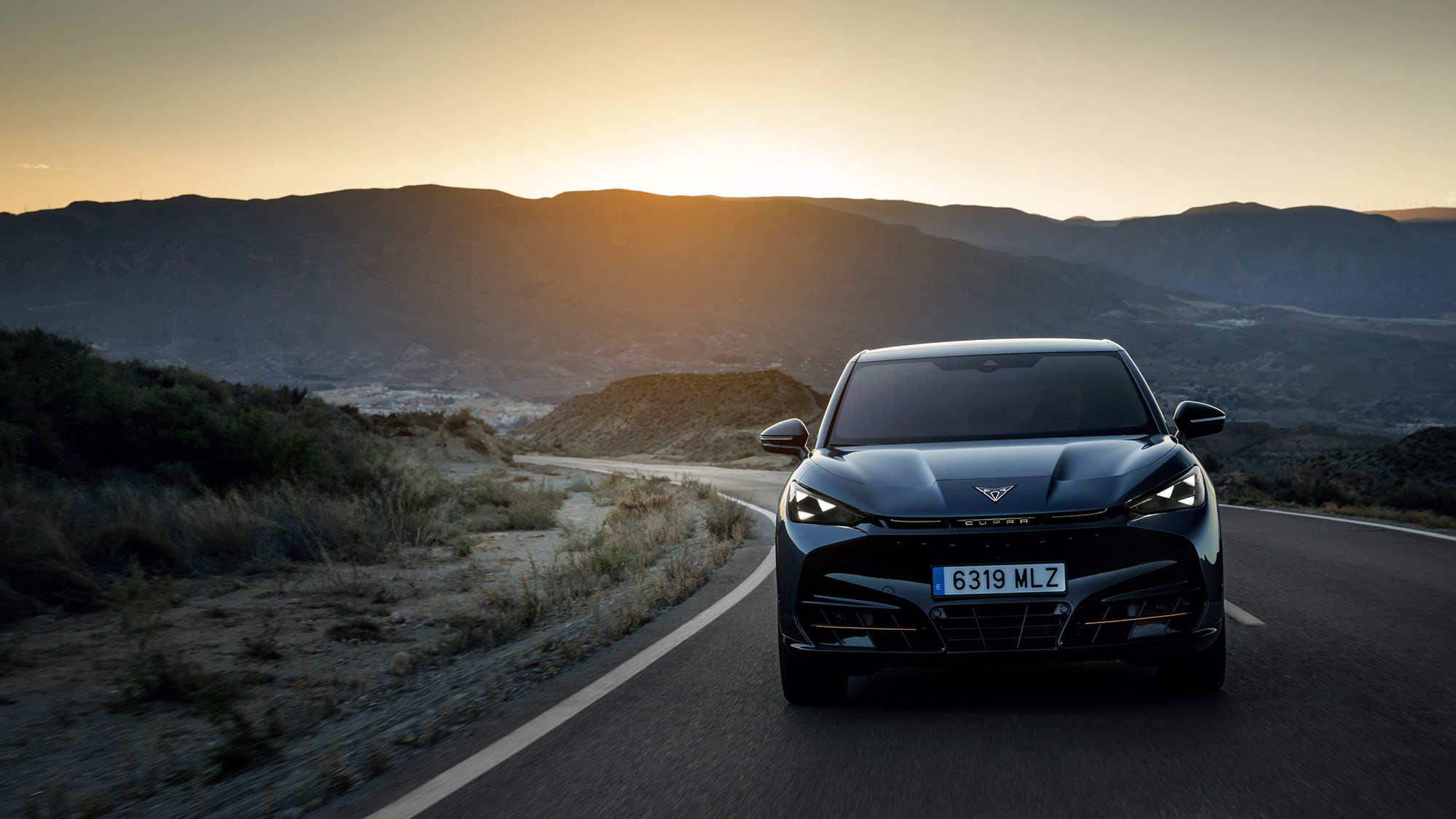
There are just two version of the Tavascan for now: a rear-wheel-drive-only model mentioned above, and the VZ model we drove. Cupra is trying to offer a more streamlined choice for customers when it comes to extras, with a Winter Pack currently being the only way to spec a heat pump, although UK specs are yet to be finalised. The standard car should start at £47,300 with the VZ we drove coming in around £55,000.
Verdict
For better or worse, the Tavascan essentially takes the Born formula and scales it up. It executes its brief well, providing grip, ample straight line speed and a degree of feedback that makes driving it fast relatively rewarding. But that if sounds stilted in some ways, that’s because, even in VZ mode, the Tavascan feels ‘competent’ rather than truly gripping.
The original Born suffered from the same lack of magic, and it’s only in sportier trim that it’s really come to life. Is the Tavascan good? Yes, but it’s some nicer plastics and a little more calibration away from being very good.